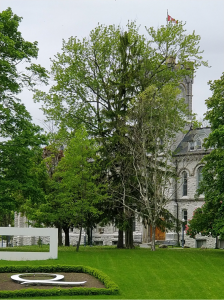The Munsee of southern Ontario (Canada) and their struggle to preserve their language
In the southern part of the Canadian province of Ontario, there are two small Indian reserves on which several hundred Munsee Indians live. Their own language, like so many Native American peoples in North America, has gradually disappeared over the past century, so that by 2023 there is only one Munsee Indian living who grew up with Munsee as mother tongue.
It has been common practice in Canadian schools for much of the last century to ridicule and, if necessary, forcefully stamp out Native American languages from the minds and hearts of Native children. The pain and shame that came with this, eventually led the young Native American parents to raise their own children in English in order to spare … ↪






